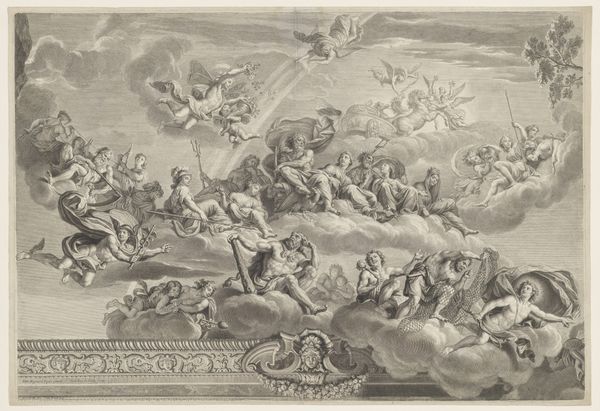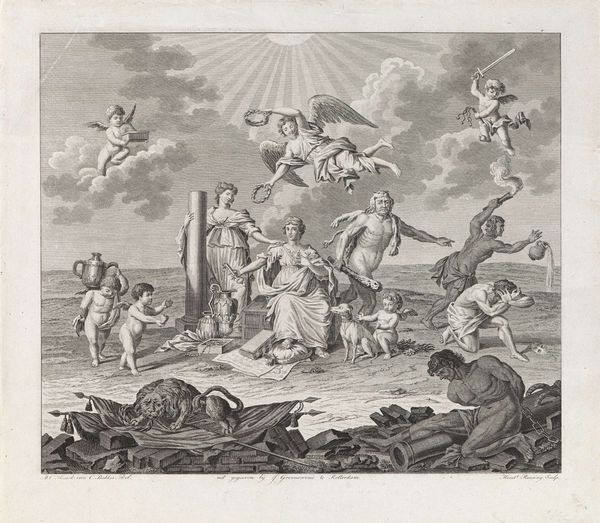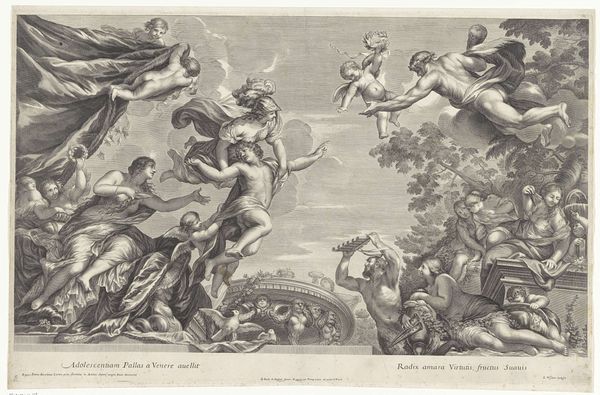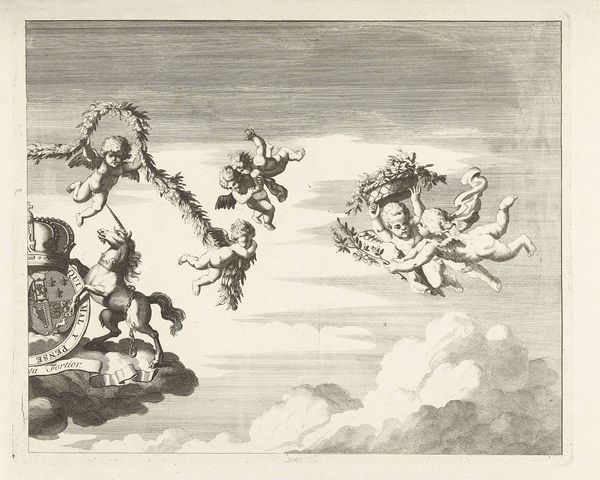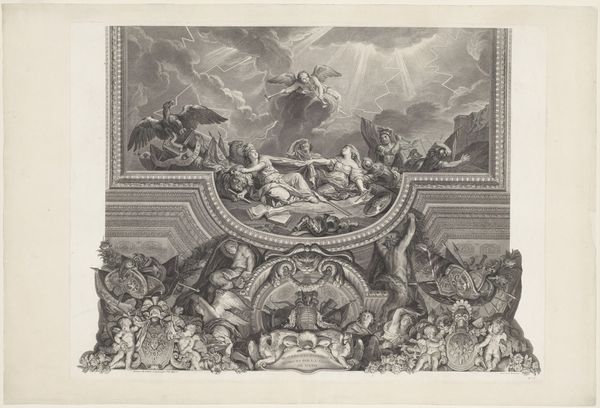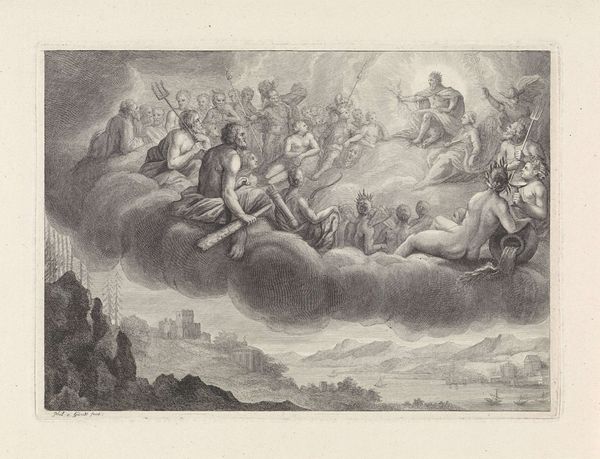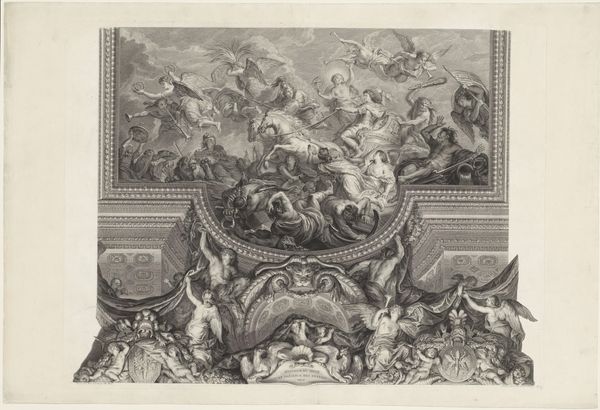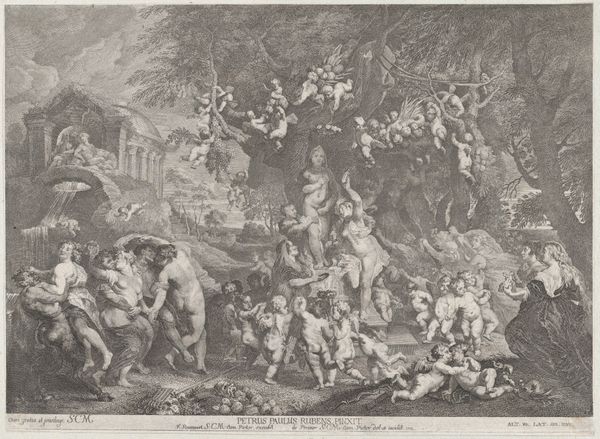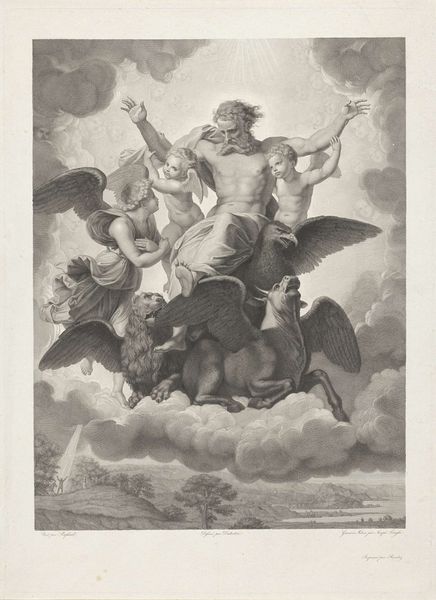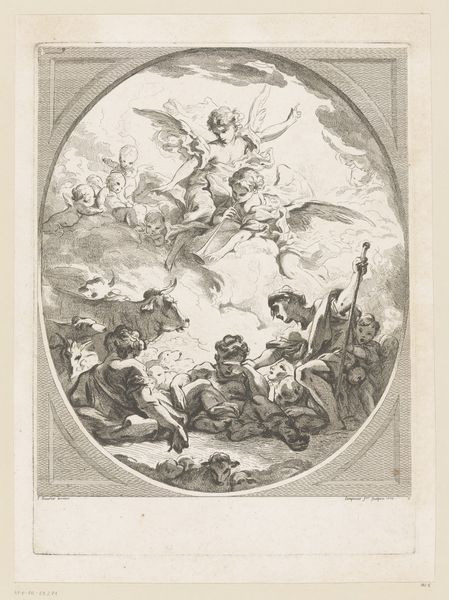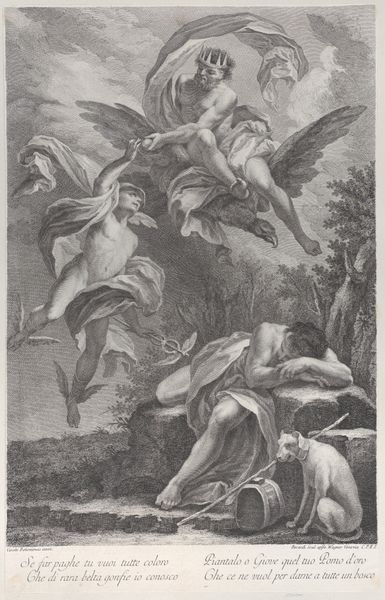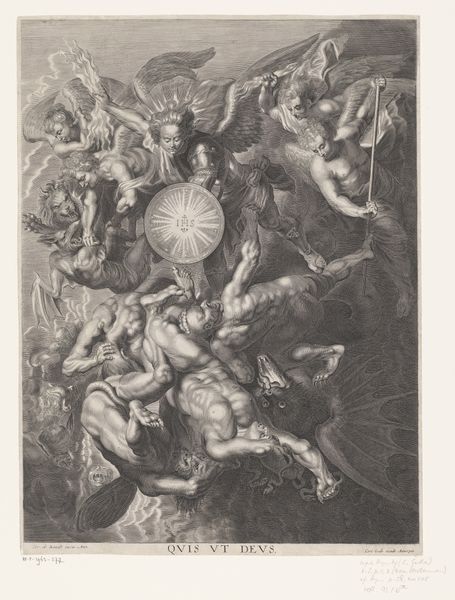
drawing, paper, ink, engraving
#
drawing
#
allegory
#
baroque
#
charcoal drawing
#
figuration
#
paper
#
ink
#
pencil drawing
#
engraving
Dimensions: height 475 mm, width 580 mm
Copyright: Rijks Museum: Open Domain
Curator: Right, let’s take a look at this engraving, "Phaëton en Apollo," made sometime between 1695 and 1742, by Charles Dupuis. What strikes you first about it? Editor: Utter chaos, beautifully rendered. It's like a celestial rugby scrum! The swirling clouds, the limbs everywhere... it feels both dramatic and slightly absurd. All those slightly horrified faces amidst the clouds. Is it just me, or is there a palpable sense of things spiraling wildly out of control? Curator: Well, the story it depicts certainly involves a loss of control. It's an interpretation of the myth of Phaëton, the son of Apollo, who tragically fails to control the sun chariot, leading to chaos and destruction on Earth. Editor: Ah, so that explains the bewildered expressions and frantic energy! Knowing the myth casts a whole new light – literally – on the composition. The drama suddenly clicks. But beyond the story, Dupuis' choice to pack the figures so densely is intriguing. It's as if everyone is implicated in this disaster. A morality lesson writ large, perhaps? Curator: Baroque art frequently used classical myths to explore moral and political themes. By depicting Phaëton’s disastrous ride, Dupuis engages with questions of authority, ambition, and the potential consequences of unchecked power. This engraving may also comment on the social and political turmoil of the period. Think of the opulent court of Louis XIV and the anxieties surrounding succession and leadership. Editor: Absolutely. It makes me wonder about the original context of display. Was this meant for a private collector, a noble, or for broader public consumption? Imagine owning a piece that essentially says, "Hey, even gods and kings screw up monumentally!" Curator: Engravings like this had a significant role in disseminating imagery and ideas across Europe, serving as visual aids for education and even political discourse. They could be found everywhere, from aristocratic collections to scholarly institutions, thereby reaching an array of viewers. Editor: So it’s propaganda…or at least persuasive imagery, masquerading as mythological storytelling. Makes the wild tumble of bodies that much more calculated. Well, that's my explosion of insight. How about you, anything more to add about this celestial catastrophe? Curator: For me, reflecting on "Phaëton en Apollo" reminds us of art’s capacity to synthesize compelling visuals with intricate narratives to communicate nuanced social commentary to a broad audience, across class lines. An artistic tour de force with much to consider.
Comments
No comments
Be the first to comment and join the conversation on the ultimate creative platform.
